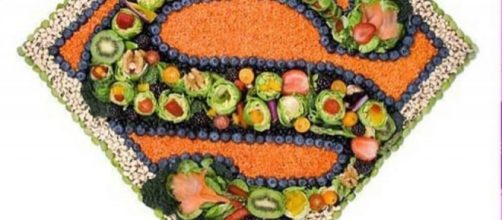This is the age of fitness, of people finding new easier ways to keep track of their health. There are gadgets for monitoring heart rate, counting calories, and minimizing fat. There are programs for working out in bed, losing weight by dancing, and slimming down without a gym membership.
One of the newer ways people are trying to live healthier lives is substitution. Sugar and flour are being replaced with organic sweeteners and gluten-free options. Pasta and soda are being replaced with vegetables and tea. The general goal of substitution is to replace something bad with something not as bad, hopefully in a way that it is almost unnoticeable.
Unfortunately, that can be one of the hardest things about a healthier lifestyle.
Food is great, but most of it is not ideal for the human body, so the game of the day is figuring out how to minimize its undesirable effects. What people often miss, though, is that there are foods that actually do good for the body. Some fruits and vegetables are not only neutral on the good vs. bad scale, but actively positive.
The heroes of the story
A superfood is defined by Google as "a nutrient-rich food considered to be especially beneficial for health and well-being". It can be especially beneficial for a few reasons. Some reduce risk of certain diseases, some contain natural vitamins, and some speed up metabolism...
and of course there are many more benefits to be had from superfoods.
One example of a superfood is the tomato. Tomatoes contain an antioxidant that isn't found in too many other foods called lycopene, which could help protect skin from UV rays and lower cholesterol. Potassium, fiber, and vitamin C are also found in tomatoes. The tomato is an easy superfood, because it appears in many things from salads to BLTs to pasta dishes.
Another easy superfood is the blueberry. Blueberries are super because they contain phytonutrients, which neutralize things that could cause aging or cell damage. These antioxidants may also prevent cancer and mental conditions related to age, such as Alzheimer's and dementia.
Blueberries can be found in muffins, spinach salads, yogurt, and smoothies. Raspberries, though not quite as super, can provide similar health benefits.
A superfood that everybody knows about but is somewhat reluctant to try is kale. Similar to spinach, only more super, kale is filled with a special type of phytonutrient that seems to reduce the occurrences of certain cancers (including breast and ovarian). The current belief is that the phytonutrient triggers the liver to produce certain enzymes that act as natural defenders against dangerous substances. Although kale is a little harder to find in everyday dishes, it can always be sautéed with other vegetables or added to a salad.
Though typically considered part of a rather unhealthy big Southern dinner, black beans are actually a superfood as well.
Black beans serve as a good alternative to red meat, because one cup contains about 15 grams of protein and no saturated fat. They are also good sources of fiber and iron, making them great for energy and heart health. This superfood can be utilized in soup, Mexican dishes, and even burgers.
Cruciferous vegetables like broccoli are super because of their phytonutrients' ability to suppress the growth of tumors and potentially reduce risks of cancer. One cup of broccoli provides the daily recommendation of vitamin C for immune health and folic acid. The trick to this superfood, a great side item to add color and texture to a meal, is not to cover it in too much ranch or cheese.
A superfood currently experiencing an increase in popularity is salmon.
The human body cannot produce omega-3 fatty acids, which reduce inflammation and improve circulation, on its own. Salmon contains these fatty acids, helping increase the good-to-bad cholesterol ratio and also providing several B vitamins. Salmon is typically served grilled or wood-grilled, but can also be blackened.
Oatmeal is a time-honored healthy breakfast tradition, and oatmeal cookies are always considered healthier than chocolate chip, so it's no surprise that oats are on the superfood list as well. They offer an abundance of magnesium (which helps regulate blood-sugar levels) and potassium, along with special fibers that help lower cholesterol.
How to use superfoods
While some superfoods like blueberries and tomatoes might be easy to incorporate into typical meals, others like oats and kale are more difficult.
Sometimes it's hard to see past the traditional to find new ways of incorporating good foods into meals. For superfoods, there are three big things to remember.
Almost anything will go in a smoothie. Yogurt, milk, and ice provide a good base for a number of superfoods. Broccoli and kale are great ingredients for green smoothies, energy-rich nutrient drinks without the sugar component of traditional fruit smoothies.
Heavy sauces are not the only options for eliminating blandness from meal. Fruits and vegetables can be livened up by a number of different things. Lemon, olive oil, and roasted red pepper flakes are great flavor enhancers for sautéed dishes that won't break the calorie bank. Similarly, honey or agave can be used with fruit in smoothies or yogurt or fruit salads.
Combination is key. There's no shame in hiding a superfood, as long as it's not beneath a mound of super unhealthy things. A straight cup of black beans might not have the right taste or texture on their own, but adding rice or making them into a burger could change everything. A piece of plain grilled salmon might be too fishy, but proper seasoning and the right side dishes could compliment the flavor perfectly.


